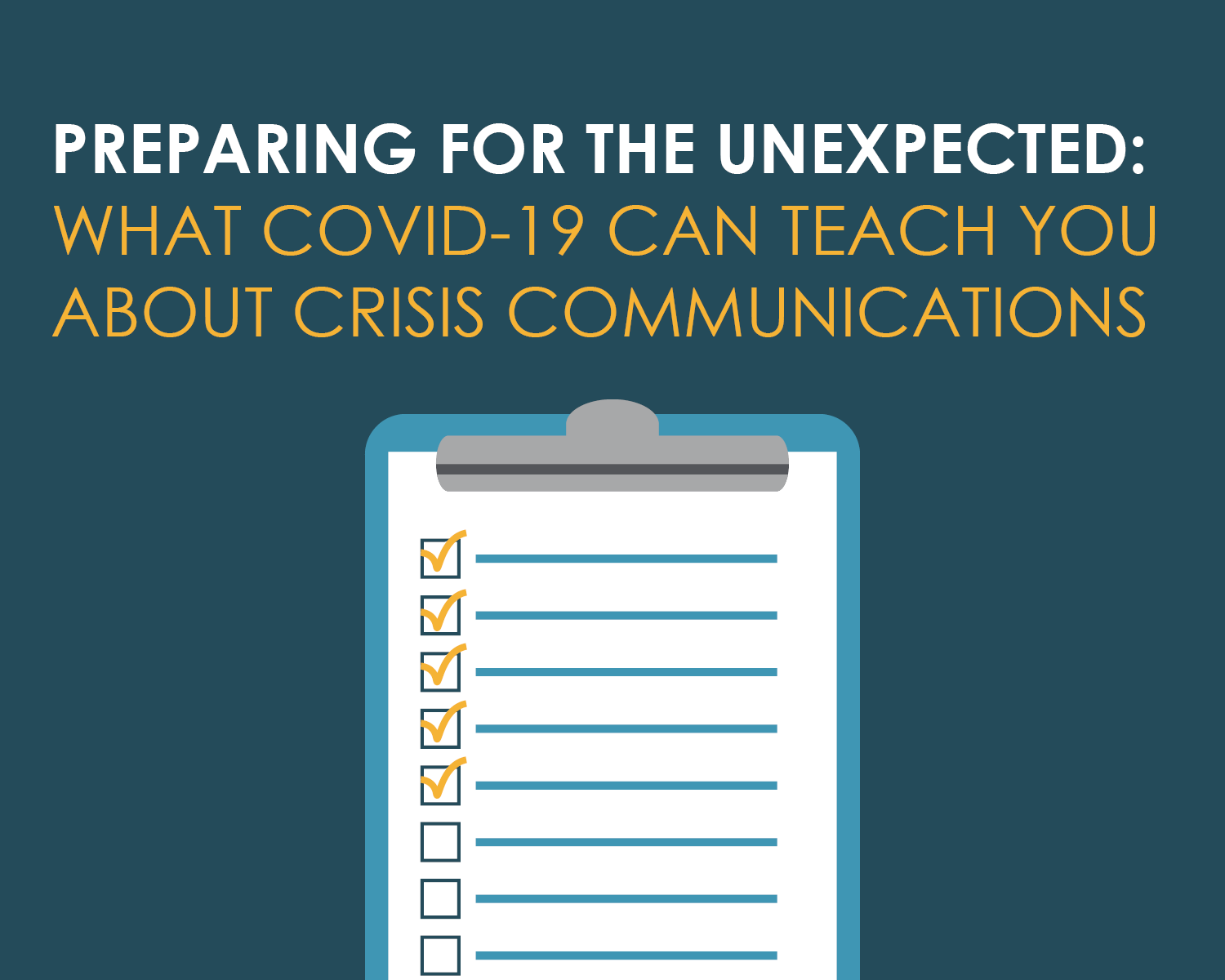Preparing for the Unexpected: What COVID-19 Can Teach You About Crisis Communications
In our crisis planning conversations with clients, we remind them it’s not a matter of if you will experience a crisis…it’s a matter of when. That’s why our team feels strongly that every business, whether a startup or decades-old industry titan, should have a written crisis plan in place.
Although we can’t always predict every single type of incident that might impact your reputation, we can start thinking through scenarios where your organization would need to react swiftly, respond appropriately and adjust accordingly.
If COVID-19 has taught us anything about communications, it’s that you should be prepared to respond to the unexpected.
But, how exactly do you prepare for a truly unprecedented circumstance you can’t possibly predict? Sounds impossible, right?
Chances are during COVID-19, many of your communications priorities have shifted or been backburnered, and the last thing you feel like you have time to do is build out a proactive, thoughtful crisis plan. Crisis planning doesn’t have to be complicated, which is why we’re sharing four foundational crisis practices that can easily be translated to effectively respond to any unexpected scenario, even widespread issues like COVID-19.
Prepare a Threat Matrix. Meet as a team and write down every “worst case scenario” your organization might face, in order from the most significant impact to least. Talk through a plan for each scenario, put it on paper and make sure everyone responsible for leading this process is familiar with their role and responsibilities. Most companies assume that a worst-case scenario will never occur, but if we’ve learned anything in 2020, it’s that anything can happen.
Pre-Draft Messaging. Map out every audience that is most important to communicate with – employees, customers, supply chain, the local community or elected officials. For each, brainstorm the key points they care most about and the ones your company cares most about. The key points that end up on both lists should be developed into pre-drafted messaging that responds to each of your worst-case scenarios with your plan of action, while reinforcing your company values. When a scenario happens, you’ll have sample communications readily accessible.
Conduct an Environmental Scan. The silver lining with a widespread issue like COVID-19 (if there is one) is that it isn’t isolated to only your business. Set up Google Alerts for others in your industry, monitor social media, pay attention to trade publications and association newsletters to keep an eye out for best practices or learnings. Another helpful tip is creating a spreadsheet with industry leaders and competitors to track how they are responding. A simple COVID-19 application is tracking which competitors are reopening or experiencing outbreaks and how they’re handling it. This will help provide a baseline for how to respond if it happens to you.
Adjust and Recalibrate. Keep a steady pulse on your business – beyond the bottom line. Throughout the life of the crisis, you must prioritize time to meet with those impacted by your decisions to understand their specific hesitations and sentiment. Ensure you’re listening carefully to employees, managers and customers so you can adjust strategy if needed. Although you may have a written protocol in place from creating a threat matrix, remaining flexible will allow you continue adjusting to unforeseen circumstances and communicating intuitively. This will keep your greatest asset, your people, aligned and committed to your business.
Our PUBLISHED by Peritus takeaway is this:
Although these basic crisis preparation practices are used to build out the foundation of any organization’s crisis program, they can also be adjusted to address specific situations. When something as earth-shattering as COVID-19 occurs, be empowered to respond accurately and quickly to protect your business through strategic communications.

